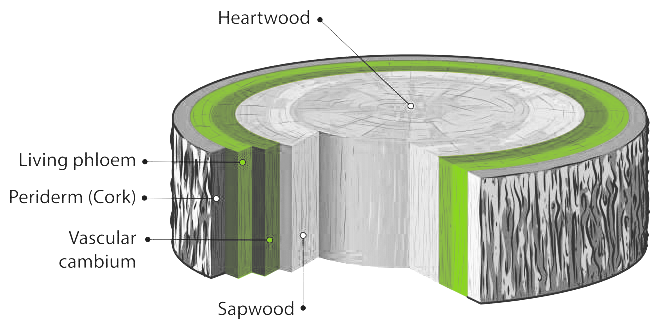the tree of time
consider a tree. it begins as a sapling, young and green. pliable, but unsupported; delicate and unprotected. over time, it brings together sunlight, air, and water to form wood; to grow. the green sapling expands from within, leaving behind layers of wood. the elements put stress on the green flesh of the tree, prompting it to grow a thick bark, to protect itself. as the tree grows, the wood in the core grows thicker, and the bark becomes more durable — and the green remains sandwiched between the two.

the green is the part of the tree that is most alive. it brings nutrients to every branch and leaf, it grows in new directions, it is rich with water and minerals. the wood within provides structure — and also, a memory of how the tree used to take up space. the bark anticipates challenges and protects the green.
time, for us humans, is like a tree in this way.
our past is the wood: a document of everything we used to be, providing structure and stability for what we are now.
our future is the bark: our attempt at knowing what is coming, and preparing for it
our present is the green; a thin moment, rich with possibilities, the only part of our experience that can truly be changed. the only part that is truly alive.
but when we see a tree, we see it in its entirety. we hold the entirety of the tree as a singular, undivided object. we don’t judge the woody knots of its past, or the rough estimations of its future. we see how its present blooms and withers in cycles over time, and we understand that that — all of it — is the tree.
can we do the same with ourselves?
can we love the past that shapes us?
can we cherish the future that protects us?
can we live fully in the present, in all its richness and aliveness?
and can we embrace the entirety of our tree for what it truly is, without judgement?
spring is coming. i’m excited to see how we all bloom.